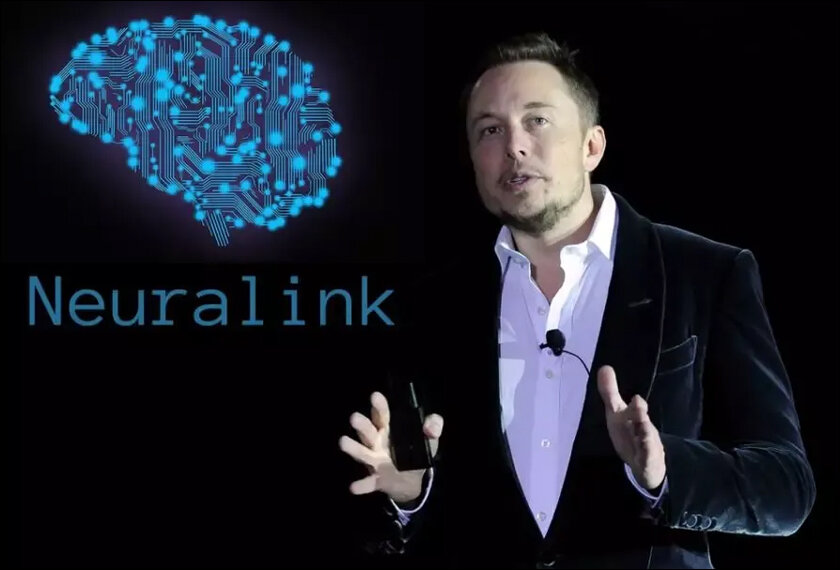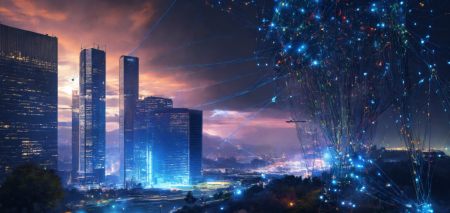Uma Iyer explains how Neuralink has the potential to bring every science-fiction trope about a man-machine interface to life.
Brain implants are not exactly new to human knowledge. In 1963, a man with a red cape holding a device stops an enraged charging bull towards him at the push of a button. This was the first ever demonstration of direct mind control, where the region of the brain called caudate nucleus when triggered by an electrode array helped the bull shed its aggression.
What started with the Yale University neural engineer, Jose Manuel Rodrigues Delgado, however controversial, has now manifested in the creation of Neuralink, a company specializing in microchips that can be implanted in the human brain.
Johnny Mnemonic and The Matrix and all the sci-fi movies have begun to come to life. Soon, Skynet from The Terminator is going to be a force we are going to be fighting against, and shape shifting will no longer be sci-fi! Alright, before we stretch our imagination, let us first explore what any of this actually means and where exactly we are in the journey?
What is Neural link and Neuralink?

Neural link, is what it says on the tin, ‘Neural connection layer to a computing means’, nerve signals captured and utilized in various ways from extracting data, to mining for information or simply manipulating many activities. Neuralink is a company based out of Fremont California founded by Elon Musk.
Elon Musk’s latest venture after conquering space, and harnessing the power of electricity and solar, he is set to capture the most powerful thing that is there, the human ‘brain’. Fast forward 10 years finto future, each tennis player will have a neural implant ensuring that the brain does not get nervous, can harness the power of various statistics, and ensure that the right muscles are employed to get a good shot at winning a match. No, this is not a figment of our imagination. Neuralink, the company founded by Elon Musk, claimed that monkeys can indeed play Pong- a computer game by moving cursors using a chip implanted in their brains.
In April last year, Neuralink claimed monkeys can play Pong – a computer game – using just their minds. They released a video of Pager, a male macaque, moving a cursor on screen and he did not even use a joystick! Neuralink chip fed information from Pagers neurons to a decoder which predicted the hand movements and enabled the output to be used to move the cursors.
What is created by Neuralink?
‘Neuralink has developed an application-specific integrated circuit (ASIC) to create a 1,536-channel recording system. This system consists of 256 amplifiers capable of being individually programmed (analog pixels), analog-to-digital converters within the chip (ADCs) and a peripheral circuit control to serialize the digitized information obtained.
It aims to convert information obtained from neurons into an understandable binary code in order to achieve greater understanding of brain function and the ability to stimulate these neurons back. With the present technology, electrodes are still too big to record the firing of individual neurons, so they can record only the firing of a group of neurons. Neuralink representatives believe this issue might get mitigated algorithmically, but it is computationally expensive and does not produce exact results.’ – Source: Wiki.
Consensual Patient registry is now being sought to be a part of the clinical trials that will further understand the diverse requirements and solutions testing on people who have quadriplegia, paraplegia, vision loss, hearing loss or the inability to speak.
This is a classic use of Artificial Intelligence and use of Neural signals. The US Food and Drug Administration as of 26th of May 2023 amid protests from PETA have approved a human clinical trial of a device that may help aid function of the human brain or restore some critical functions.
History of Neural links
Going back further to 1799, electric ray and electric eel both using its electric organs were proven to be able to generate electric shock from 10V to 200V as proven by zoologist Carl Linneaus. However, in 1780s the actual evidence was provided by the Italians (physician Luigi Galvani) that the basis of the human nervous system worked on the basis of the internal electrical system while dissecting a frog! The frogs legs suddenly jerked when the scalpel used for dissection accumulated static electricity animating the movement.
Human experiments and the ethical conundrum

(Image Credit: Wikimedia)
What started with frogs and eels suddenly picked up pace with humans. After Italians, German scientists simulated the brain of a dog to get predictable output in the 1800s. Then the American scientist Roberts Bartholomew did some questionable tests on a woman with her consent where the skull was exposed by simulating the brain with electrodes, while getting a response, the intensity of the shock, led the lady to subsequent coma then death.

Jose Manuel Rodriguez Delgado was one of the most controversial pioneers in 1940s where he designed surgical implants to replace the lobotomy of psychiatric patients, which is the closest to neuralink as the devices were the size of a large coin. It was designed to treat epileptic and other conditions and he also created a chemitrode to send out drugs at specific impulses. This and many other of his trials came under a ‘trial of fire’, nonetheless the base was set.
Neuralinks and the future of neural interfaces
While so many issues were raised, one of the most important advancements was the cochlear implant allowing many of the deaf people to hear. It was an extension of the cochlea that converts sound waves to neural impulses. While there could be birth defects or accidental damage. The implantable system directly stimulates the cochlear nerve and bypasses the damaged cochlea, thus effectively curing deafness. Millions of people have benefited from the invention. This now extends to the visual cortex to support people with parkinsons, with deep brain stimulation systems to help pain management, OCD, etc.
Today, thousands of people have been fitted with deep brain stimulation systems to treat not just PD, but also epilepsy, chronic pain, depression and obsessive compulsive disorder. So-called “closed loop” systems have been developed that can detect when a patient requires help, and then deliver the correct stimulation automatically.
Human psychology and the future of Neuralinks
Assume your electric car got a brain of its own and started driving you to places and you assume that the place it is taking you to is the place where you want to be, although it is not exactly the case? The sense of self and reality will start to dilute and the brain will stop to use the sense of self and agency. Social media addiction is an external stimuli, however, this would be a deep implanted aspect. Bionic arms, light sensitive channels, etc may end up making us cyborgs of the future! If not regulated carefully, Neuralinks and other advancements may end up being a danger to the future of the human race.
In case you missed:
- None Found









